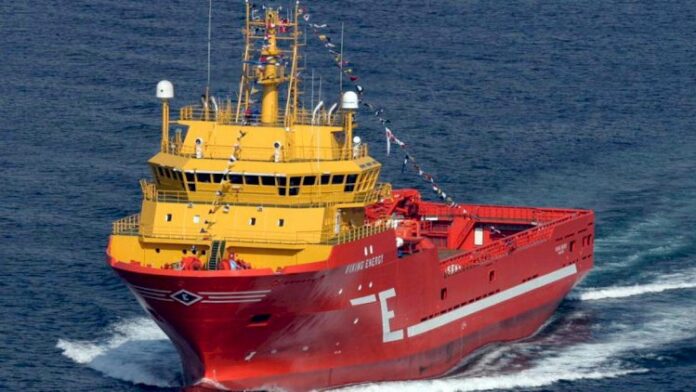Equinor has signed an agreement with Eidesvik Offshore shipyard for the construction of the Viking Energy supply vessel, capable of covering long distances fuelled by carbon-free ammonia. The vessel will transport supplies to installations on the Norwegian continental shelf (NCS).
Equinor has awarded Eidesvik Offshore a five-year contract with effect from April 2020, when the current contract expires. The Viking Energy supply vessel will in the contract period be part of a research project developing, installing and testing long-distance sailing fuelled by carbon-free ammonia fuel cells. The technology will be tested on the vessel from 2024.
Cecilie Rønning, senior vice president for Equinor’s joint operations support, says:
“Equinor aims to reduce the emissions in our supply chain, and regards the use of ammonia as a promising solution. Viking Energy may become the first supply vessel in the world covering long distances fuelled by pure carbon-free ammonia.”
Together with the Konkraft partners Equinor earlier this year launched a joint ambition to reduce the greenhouse gas emissions from oil and gas operations in Norway by 40 percent by 2030, and to near zero by 2050.
The project will test whether the technology can deliver 100 percent carbon-free power over long distances.
According to the project plans ammonia will meet 60 to 70 percent of the power requirement on board for a test period of one year. Viking Energy will still be able to use LNG as fuel, and the remaining power requirement will be met by battery.
Equinor is part of the European innovation project ShipFC, a consortium of 14 European companies and institutions coordinated by NCE Maritime Cleantech.
The main partners of the five-year research project are NCE Maritime Cleantech, Eidesvik Offshore, Wärtsilä, Prototech and Equinor. Wärtsilä will deliver the power technology and ammonia storage and distribution systems. Prototech will deliver the fuel cell system.
Henriette Undrum, Equinor’s head of future value chains, says:
“If we solve this the ship industry will for the first time use a fuel that does not generate emissions during combustion. Much work remains, but Equinor will contribute both to technology development and as a customer. We have never before used a carbon-free fuel on a large vessel without range anxiety.”
Ammonia research on Viking Energy has a total budget of NOK 230 million, a substantial part of which is EU funded. The partners also have a good dialogue with Innovasjon Norge and Enova about potential additional funding of the project.
Equinor has since the early 2000s proactively addressed ways of cutting emissions from supply vessels on the NCS. Viking Energy was the first LNG-fuelled vessel in Equinor’s fleet in 2003, and the first vessel with hybrid battery power in 2016.
Hybrid battery power and power from shore are now part of the requirements for all supply vessels that sign long-term contracts with Equinor.
During 2020 all the 19 supply vessels on long-term contracts with Equinor will feature battery power and power from shore. Ammonia-fuelled vessels will be a new step in the right direction in the efforts to reduce the carbon footprint from maritime operations.



